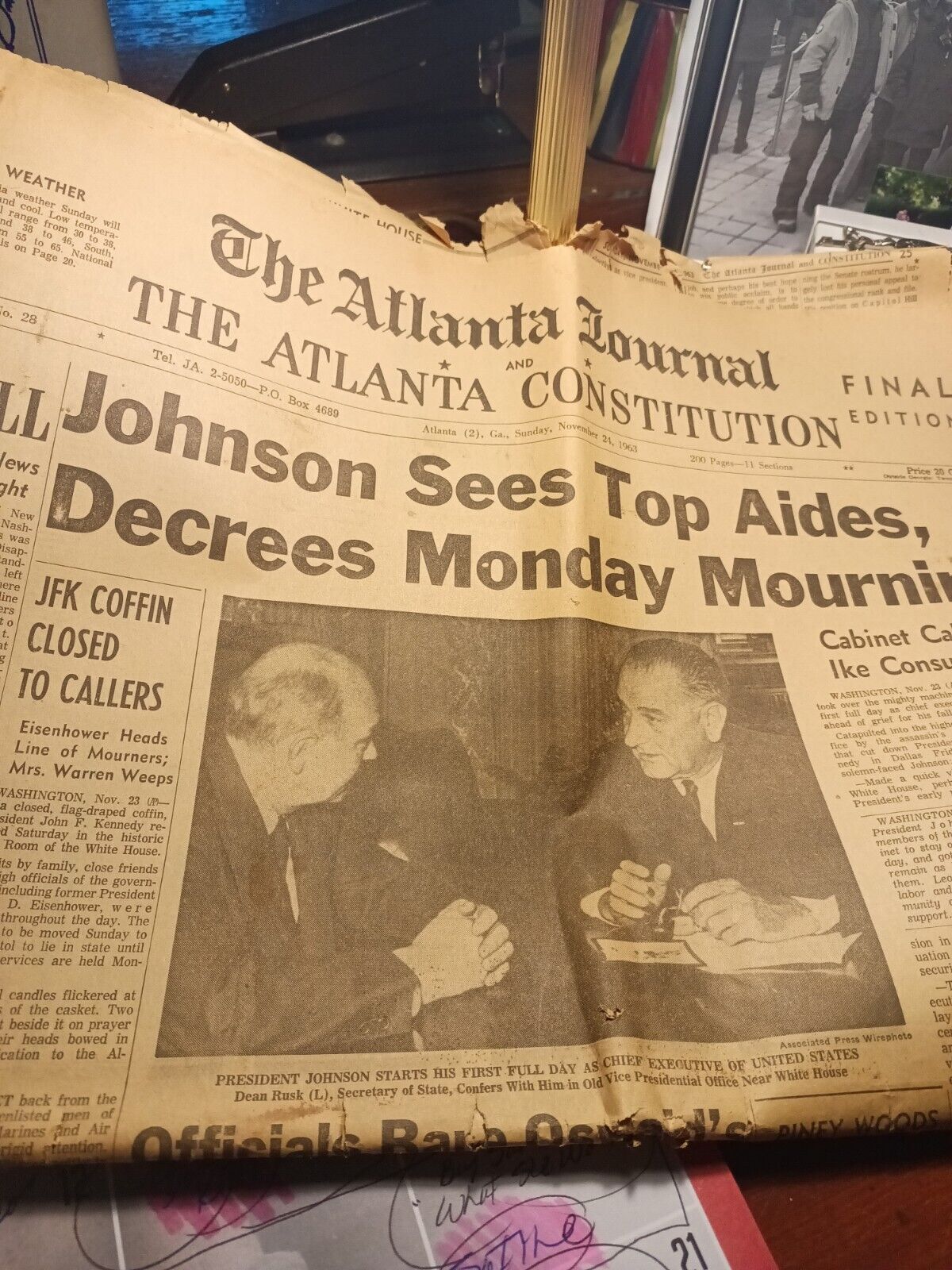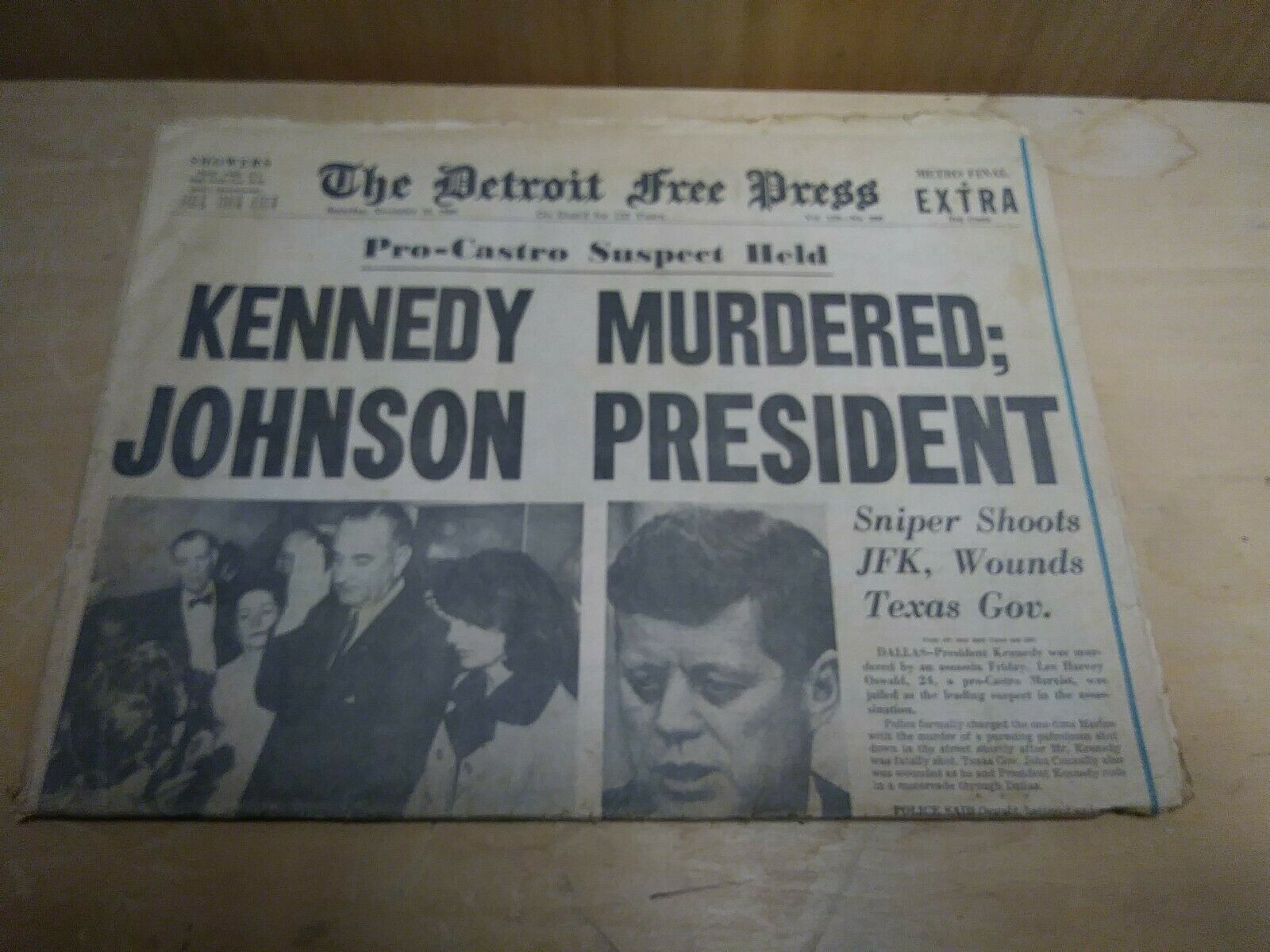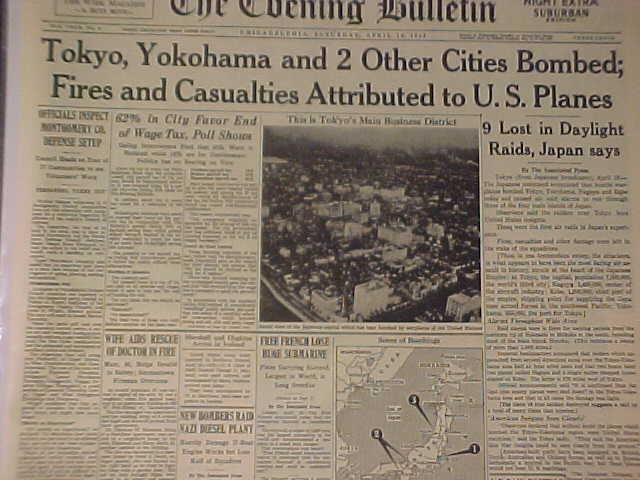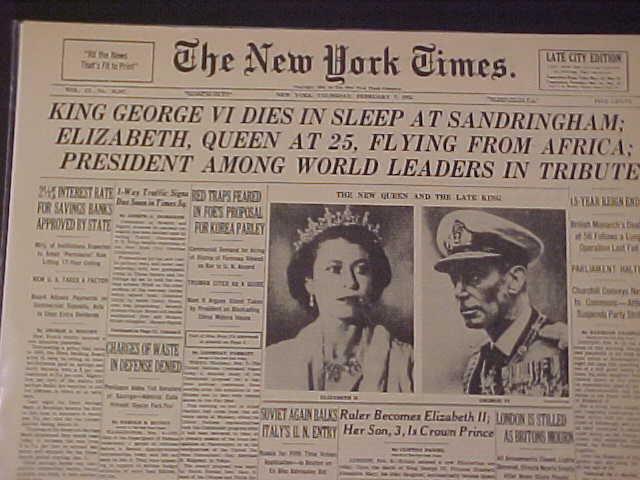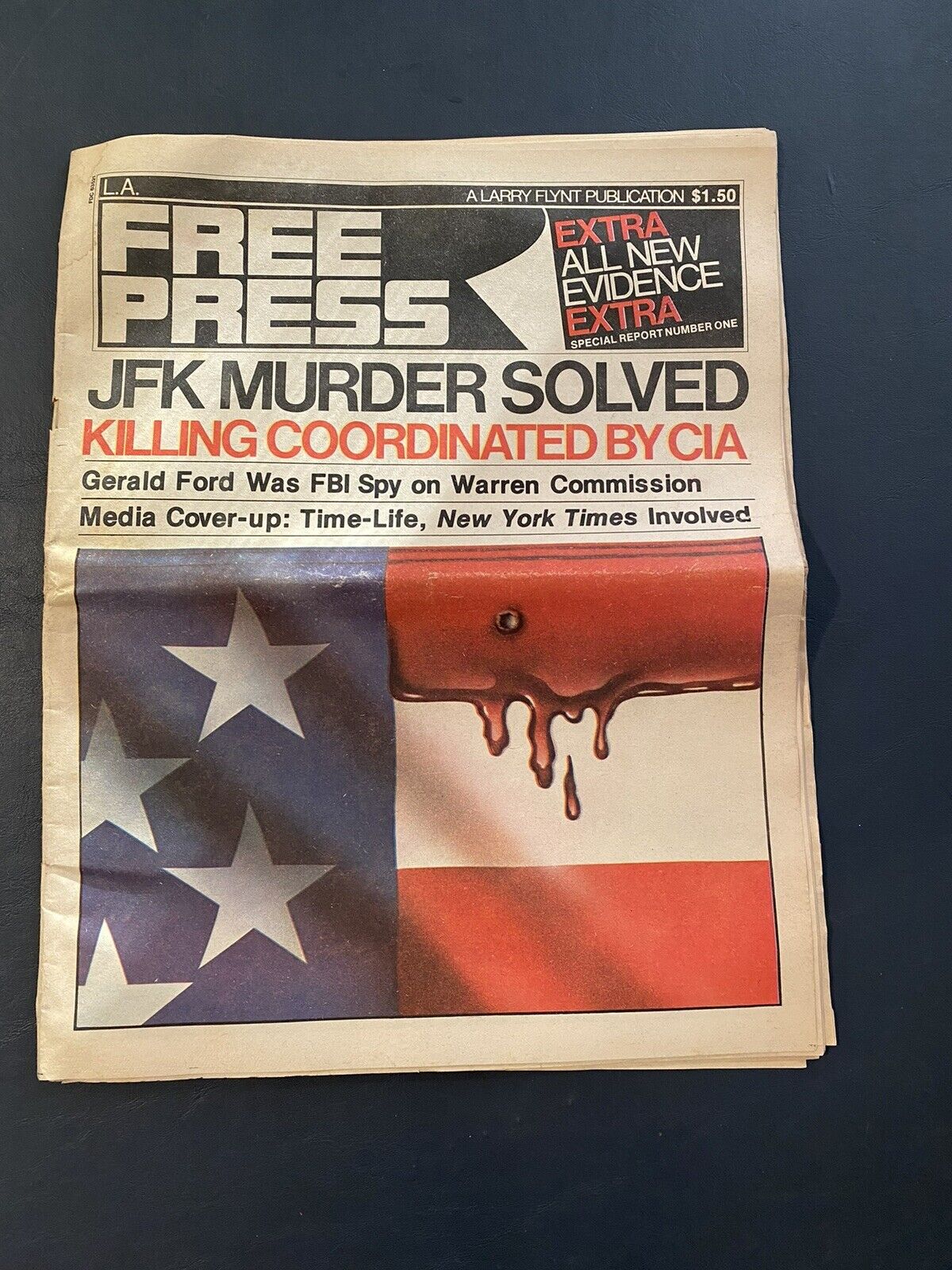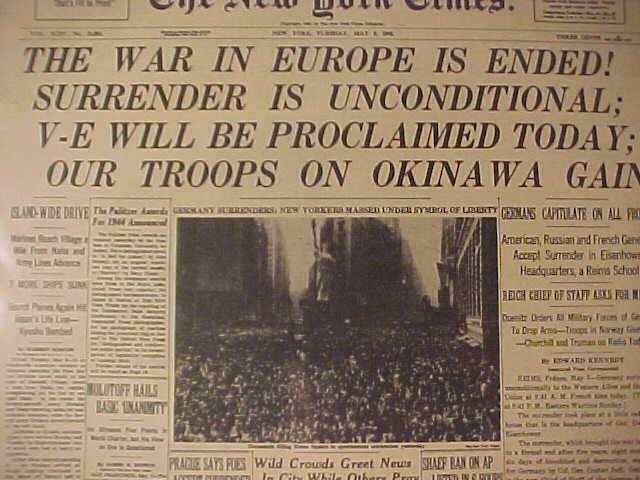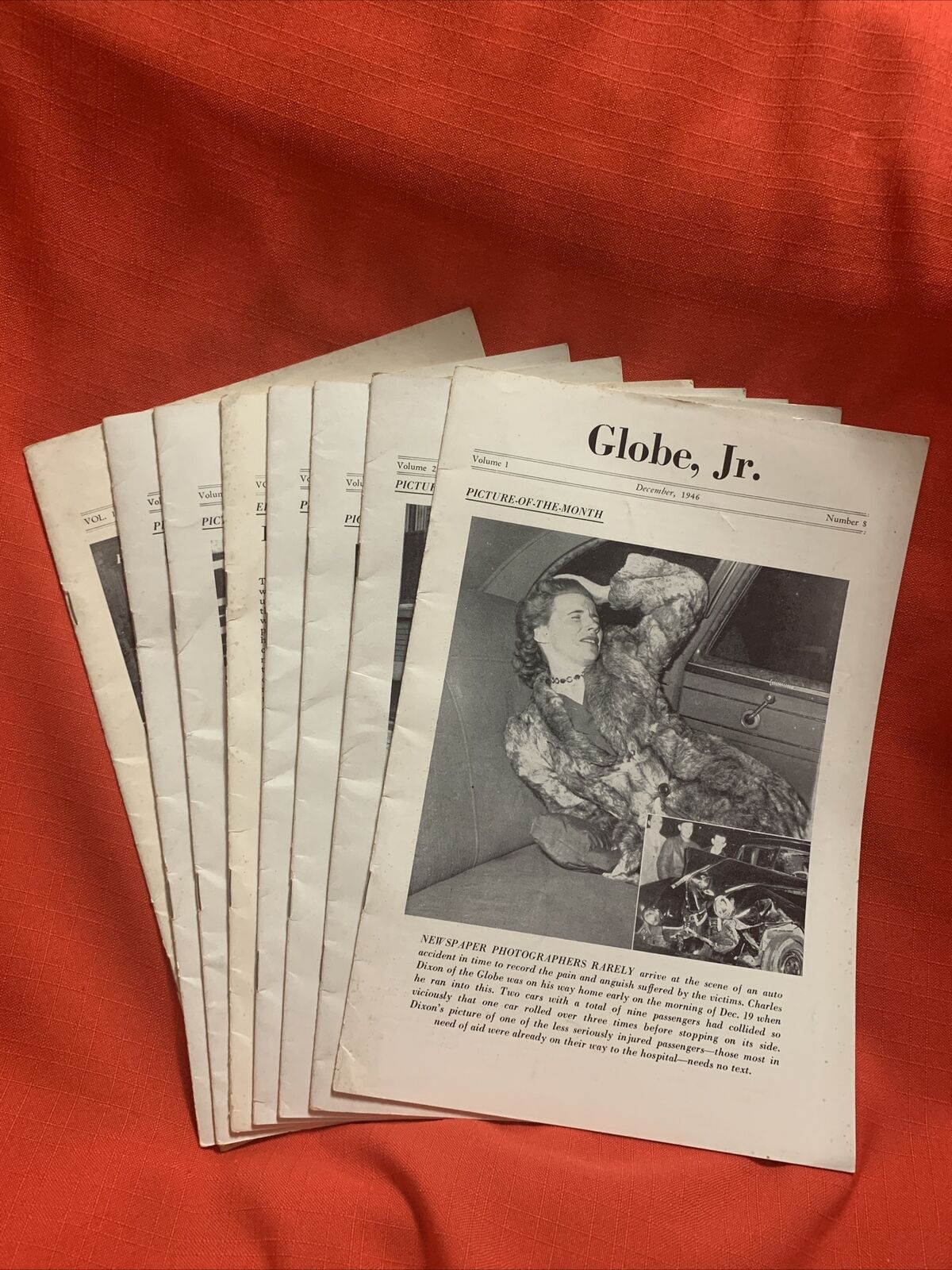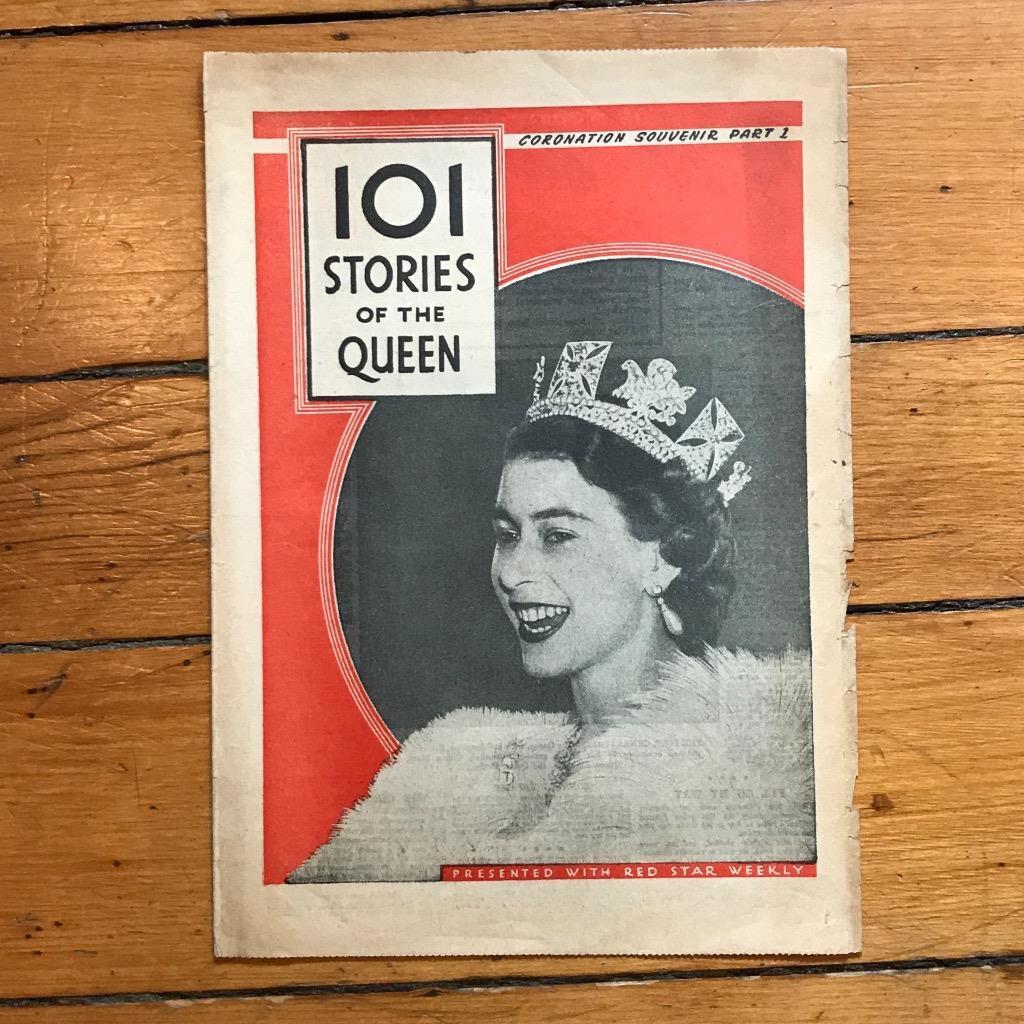-40%
1945 WW II Stars & Stripes newspaper Eyewitness account of HITLER DEATH LastDAYS
$ 26.4
- Description
- Size Guide
Description
1945 WW II Stars & Stripes newspaper Eyewitness account of HITLER DEATH LastDAYS1945 WW II Stars & Stripes newspaper with an Eyewitness account of Nazi leader ADOLPH HITLER 's DEATH Last DAYS
- inv # 2V-248
Please visit our
EBAY STORE
for THOUSANDS MORE HISTORICAL NEWSPAPERS for SALE or at auction
SEE PHOTO(s)----- COMPLETE ORIGINAL American WW II era Armed Forces newspaper, the
Stars and Stripes
dated May 18, 1945.
This issue contains prominent inside page headlines: "HITLER'S SECRETARY TELLS STORY OF HIS LAST DAYS" with a
long detailed eyewitness account of the LAST DAYS and DEATH of Nazi German leader ADOLPH HITLER
.
By early 1945, Nazi Germany was on the verge of total military collapse. Poland had fallen to the advancing Soviet Red Army, which was preparing to cross the Oder between Küstrin and Frankfurt-an-der-Oder with the objective of capturing Berlin 51 mi to the west. German forces had recently lost to the Allies in the Ardennes Offensive, with British and Canadian forces crossing the Rhine into the German industrial heartland of the Ruhr. U.S. forces in the south had captured Lorraine and were advancing towards Mainz, Mannheim, and the Rhine. German forces in Italy were withdrawing north, as they were pressed by the U.S. and Commonwealth forces as part of the Spring Offensive to advance across the Po and into the foothills of the Alps.
Hitler retreated to his Führerbunker in Berlin, on 16 January 1945. It was clear to the Nazi leadership that the battle for Berlin would be the final battle of the war in Europe. Some 325,000 soldiers of Germany's Army Group B were surrounded and captured in the Ruhr Pocket on 18 April, leaving the path open for U.S. forces to reach Berlin. By 11 April the Americans crossed the Elbe, 62 mi to the west of the city. On 16 April, Soviet forces to the east crossed the Oder and commenced the battle for the Seelow Heights, the last major defensive line protecting Berlin on that side. By 19 April, the Germans were in full retreat from Seelow Heights, leaving no front line. Berlin was bombarded by Soviet artillery for the first time on 20 April, which was also Hitler's birthday. By the evening of 21 April, Red Army tanks reached the outskirts of the city.
At the afternoon situation conference on 22 April, Hitler suffered a total nervous collapse when he was informed that the orders he had issued the previous day for SS-General Felix Steiner's Army Detachment Steiner to counterattack had not been obeyed. Hitler launched a tirade against his commanders, calling them treacherous and incompetent, culminating in a declaration—for the first time—that the war was lost. Hitler announced that he would stay in Berlin until the end and then shoot himself. Later that day, he asked SS physician Werner Haase about the most reliable method of suicide. Haase suggested the "pistol-and-poison method" of combining a dose of cyanide with a gunshot to the head. Luftwaffe chief Reichsmarschall Hermann Göring learned about this and sent a telegram to Hitler asking for permission to take over the leadership of the Reich in accordance with Hitler's 1941 decree naming him as his successor. Hitler's secretary Martin Bormann convinced Hitler that Göring was threatening a coup. In response, Hitler informed Göring that he would be executed unless he resigned all of his posts. Later that day, he sacked Göring from all of his offices and ordered his arrest.
By 27 April, Berlin was cut off from the rest of Germany. Secure radio communications with defending units had been lost; the command staff in the Führerbunker had to depend on telephone lines for passing instructions and orders, and on public radio for news and information. On 28 April, Hitler received a BBC report originating from Reuters; the report stated that Reichsführer-SS Heinrich Himmler had offered to surrender to the Western Allies. The offer was declined. Himmler had implied to the Allies that he had the authority to negotiate a surrender, which Hitler considered to be treason. That afternoon, Hitler's anger and bitterness escalated into a rage against Himmler. Hitler ordered Himmler's arrest and had Hermann Fegelein (Himmler's SS representative at Hitler's headquarters) shot for desertion.
By this time, the Red Army had advanced to the Potsdamer Platz, and all indications were that they were preparing to storm the Chancellery. This report and Himmler's treachery prompted Hitler to make the last decisions of his life. Shortly after midnight on 29 April, he married Eva Braun in a small civil ceremony in a map room within the Führerbunker. Hitler then hosted a modest wedding breakfast with his new wife, after which he took secretary Traudl Junge to another room and dictated his last will and testament. It left instructions to be carried out immediately following his death, with Grand Admiral Karl Dönitz and Joseph Goebbels assuming Hitler's roles as head of state and chancellor respectively. Hitler signed these documents at 04:00 and then went to bed. Some sources say that he dictated the last will and testament immediately before the wedding, but all agree on the timing of the signing.
On the afternoon of 29 April, Hitler learned that his ally, Benito Mussolini, had been executed by Italian partisans. The bodies of Mussolini and his mistress, Clara Petacci, had been strung up by their heels. The corpses were later cut down and thrown into the gutter, where they were mocked by Italian dissenters. These events may have strengthened Hitler's resolve not to allow himself or his wife to be made a "spectacle" of, as he had earlier recorded in his testament. Doubting the efficacy of the cyanide capsules distributed by SS physician Dr. Ludwig Stumpfegger, Hitler ordered Dr. Haase to test one on his dog Blondi, who died as a result.
Hitler and Braun lived together as husband and wife in the bunker for less than forty hours. By 01:00 on 30 April, Field Marshall Wilhelm Keitel had reported that all of the forces on which Hitler had been depending to rescue Berlin had either been encircled or forced onto the defensive.[28] At around 02:30, Hitler appeared in the corridor where about twenty people, mostly women, were assembled to give their farewells. He walked the line and shook hands with each of them before retiring to his quarters. Late in the morning, with the Soviets less than 1,600 ft from the Führerbunker, Hitler had a meeting with General Helmuth Weidling, the commander of the Berlin Defence Area. Weidling told Hitler that the garrison would probably run out of ammunition that night, and that the fighting in Berlin would inevitably come to an end within the next 24 hours. Weidling asked for permission for a break-out; this was a request he had unsuccessfully made before. Hitler did not answer, and Weidling went back to his headquarters in the Bendlerblock. At about 13:00 he received Hitler's permission to try a break-out that night. Hitler, two secretaries, and his personal cook then had lunch, after which Hitler and Braun said goodbye to members of the bunker staff and fellow occupants, including Bormann, Goebbels and his family, the secretaries, and several military officers. At around 14:30 Adolf and Eva Hitler went into his personal study.
Several witnesses later reported that they heard a loud gunshot at approximately 15:30. After waiting a few minutes, Hitler's valet, Heinz Linge, opened the study door with Bormann at his side. Linge later stated that he immediately noted a scent of burnt almonds, which is a common observation in the presence of prussic acid (hydrogen cyanide). Hitler's adjutant, SS-Sturmbannführer Otto Günsche, entered the study and found the two lifeless bodies on the sofa. Eva, with her legs drawn up, was to Hitler's left and slumped away from him. Günsche stated that Hitler "sat ... sunken over, with blood dripping out of his right temple. He had shot himself with his own pistol, a Walther PPK 7.65." The gun lay at his feet and according to SS-Oberscharführer Rochus Misch, Hitler's head was lying on the table in front of him. Blood dripping from Hitler's right temple and chin had made a large stain on the right arm of the sofa and was pooling on the carpet. According to Linge, Eva's body had no visible physical wounds, and her face showed how she had died—by cyanide poisoning. Günsche and SS-Brigadeführer Wilhelm Mohnke stated "unequivocally" that all outsiders and those performing duties and work in the bunker "did not have any access" to Hitler's private living quarters during the time of death (between 15:00 and 16:00).
Günsche left the study and announced that Hitler was dead.
In World War II, the
Stars and Stripes
newspaper was printed in several editions in several operating theaters. Both newspapermen in uniform and young soldiers, some of whom would later become important journalists, filled the staffs and showed zeal and talent in publishing and delivering the paper on time. Some of the editions were assembled and printed very close to the front in order to get the latest information to the most troops. Also, during the war, the newspaper published the 53-book series G.I. Stories.
The newspaper was the main printed source of news at the installations in Europe and Mideast and East Asia. Stars and Stripes has expanded to an average of 40–48 pages each day and is still published in tabloid format, reminiscent of many British dailies. The newspaper employs civilian reporters, and U.S. military senior noncommissioned officers as reporters, at a number of locations around the world.
After Bill Mauldin did his popular "Willie and Joe" cartoons for the WWII Stars and Stripes, he returned home for a successful career as an editorial cartoonist and two-time winner of the Pulitzer Prize. Former Stars and Stripes staffers also include 60 Minutes’ Andy Rooney and Steve Kroft, songwriter and author Shel Silverstein, comic book illustrator Tom Sutton, author and television news correspondent Tony Zappone, cartoonist Vernon Grant (A Monster Is Loose in Tokyo), Hollywood photographer Phil Stern and the late stock market reporter and host of public television's Wall Street Week, Louis Rukeyser.
Very good condition. This listing includes the complete entire original newspaper, NOT just a clipping or a page of it. STEPHEN A. GOLDMAN HISTORICAL NEWSPAPERS stands behind all of the items that we sell with a no questions asked, money back guarantee. Every item we sell is an original newspaper printed on the date indicated at the beginning of its description. U.S. buyers pay priority mail postage which includes waterproof plastic and a heavy cardboard flat to protect the purchased item from damage in the mail. Upon request by the buyer, we can ship by USPS Media Mail to reduce postage cost; however, please be aware that USPS Media Mail can be very slow in its time of transit to the buyer. International postage is quoted when we are informed as to where the package is to be sent. We do combine postage (to reduce postage costs) for multiple purchases sent in the same package.
We list thousands of rare newspapers with dates from 1570 through 2004 on Ebay each week. This is truly SIX CENTURIES OF HISTORY that YOU CAN OWN!
Stephen A. Goldman Historical Newspapers has been in the business of buying and selling historical newspapers for over 50 years. Dr. Goldman is a consultant to the Freedom Forum Newseum and a member of the American Antiquarian Society. You can buy with confidence from us, knowing that we stand behind all of our historical items with a 100% money back guarantee. Let our 50+ years of experience work for YOU ! We have hundreds of thousands of historical newspapers (and their very early precursors) for sale.
Stephen A. Goldman Historical Newspapers
has been in the business of buying and selling historical newspapers for over 50 years. We are located in the charming Maryland Eastern Shore town of OXFORD, Maryland.
Dr. Goldman is a consultant to the Freedom Forum Newseum and a member of the American Antiquarian Society. You can buy with confidence from us, knowing that we stand behind all of our historical items with a 100% money back guarantee. Let our 50+ years of experience work for YOU ! We have hundreds of thousands of historical newspapers (and their very early precursors) for sale.
We invite customer requests for historical newspapers that are not yet located in our extensive Ebay listing of items. With an inventory of nearly a million historical newspapers (and their early precursors) we are likely have just the one
YOU
are searching for.
WE ARE ALSO ACTIVE BUYERS OF HISTORICAL NEWSPAPERS, including large and small personal collections, bound volumes, significant individual issues, or deaccessions from libraries and historical societies. IF YOU WANT TO SELL, WE WANT TO BUY !!!
Powered by SixBit's eCommerce Solution





